Definition
A payoff profile shows the scenarios under which a trade will make money and the scenarios under which it will lose money.
In the most common case, it is a simple graph that plots the change in the price of the underlying security on the horizontal axis and the change in the price of the derivative security on the vertical axis.
Depending on the type of the instrument the changes in value may be linear or nonlinear. In our case, the horizontal and vertical axis have the same units implying that the change in value is linear.
The horizontal axis tracks the change in the value of the underlying. The vertical axis tracks the change in the value of the derivative instrument. O or origin represents the current underlying price. The changes in the underlying and the derivative instrument are marked in a single unit (+1, +2, +3).
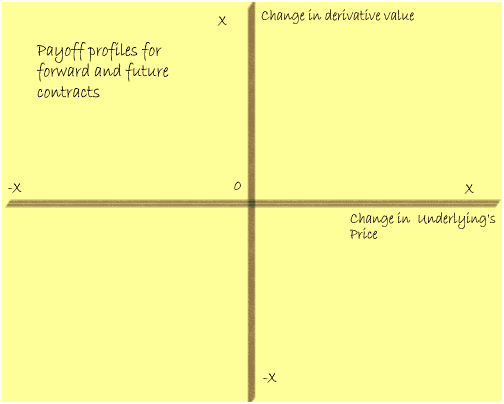
For most contract types, use this simple tool to highlight the cash flow profile of a transaction type. We use the same tool for Forwards, Futures, Interest Rate Swaps, Options and for dissecting exotic products into basic forms.
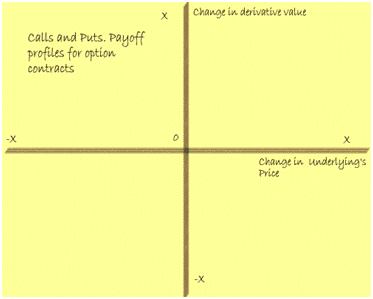
The payoff profile for a forward contract
You will use a long position (you are a buyer) forward contract when you wish to hedge yourself against the risk of rising prices in the future. To hedge yourself against the risk of falling prices in the future use a short position (you are a seller). The next four figures walk through the calculation of payoff profiles for a long forward contract.
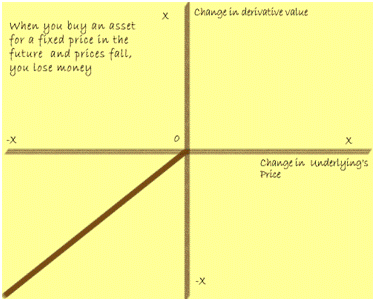
There are four quadrants, I, II, III, IV, rotating clockwise through the grid above.
- Quadrant I – Underlying prices fall, the derivative value increases
- Quadrant II – Underlying prices rise, the derivative value rises
- Quadrant III – Underlying prices fall, the derivative value falls
- Quadrant IV – Underlying prices rise, the derivative value falls

In the case of a forward contract, the resulting payoff profile across all four quadrants is the same as if you actually own and hold the security. The value of your portfolio increases as the underlying prices rise and decreases as the underlying price falls.
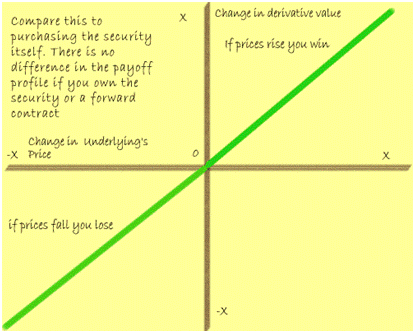
In our next post, we will look at the payoff profiles for call & put options.

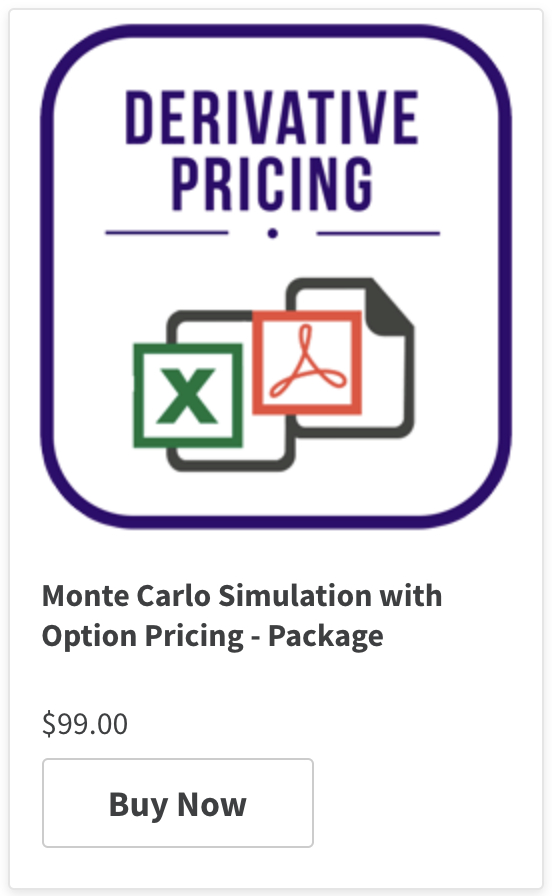
Comments are closed.